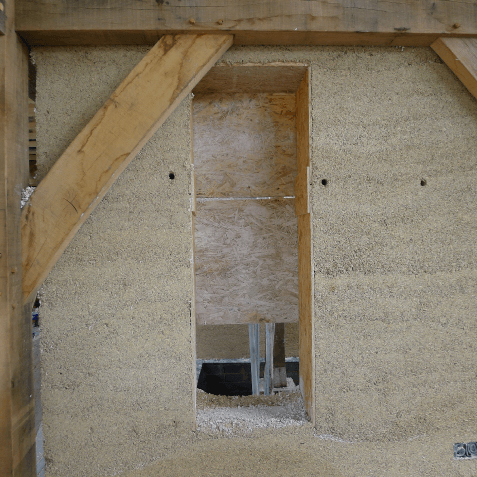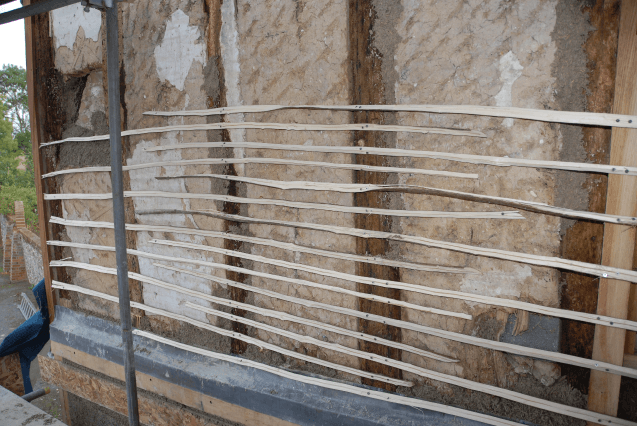Building with hempcrete – uses
So what exactly can you can use hempcrete for?
In new-build, hempcrete is most commonly used to make walls, but can also be used to form floor slabs, ceilings, and roof insulation.

Hempcrete walls
In contrast to conventional insulation materials (which tend to be installed in a cavity within the wall, or added to wall as an extra layer in the build-up) hempcrete in walls forms the wall and the insulation in one piece, with the only other materials being the structural frame (usually untreated softwood). Wet finishes – a lime or clay plaster internally and lime render externally – are the only other additions to the basic hempcrete wall, although cladding (timber, stone, brick etc.) can be used in place of wet finishes if desired.
Hempcrete floors and roofs
In floors and roofs hempcrete is used in combination with other materials to provide an insulating layer, which can form all, or part, of the insulation layer depending on the building design.
Hempcrete retrofit infill panels
In the restoration or retrofit of traditional and historic buildings hempcrete is often used to replace or repair infill panels in timber frame buildings, or to add insulation to solid walls in old buildings. It is ideal for use in traditional buildings because of its vapour-permeability and its ability (as a wet-mixed, loose-fill material which hardens once applied) to mould itself exactly to unevenly shaped walls in an old building, and support itself without sagging.

If you are interested in restoration, here are some examples where we have used hempcrete on a tudor hall house and retrofit to a listed building.
 UK Hempcrete
UK Hempcrete